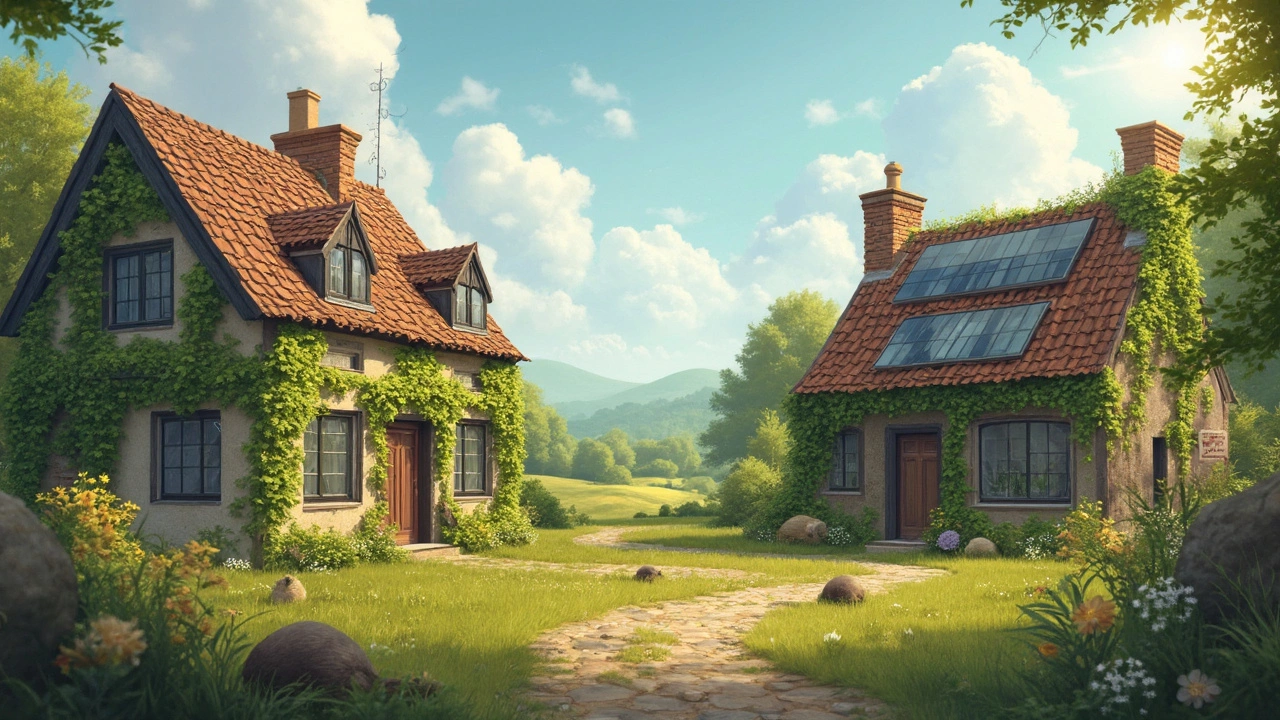Sustainable Construction: Building Green Lodges and Retreats in Lancashire
Thinking about a new lodge or a renovation? You don’t have to choose between comfort and the planet. With a few smart decisions you can make your cottage or hotel run on less energy, waste less water, and feel right at home in the countryside. Let’s break down the most useful steps.
Choosing Eco‑Friendly Materials
Start with the stuff you build with. Reclaimed timber, locally‑sourced stone, and low‑impact brick cut transportation emissions and give the building a natural look that blends with the Lancashire landscape. Insulation made from sheep’s wool or cellulose is cheap, effective, and biodegradable. When you pick these options, you’re not just ticking a box—you’re actually lowering the carbon cost of the whole structure.
Design Features That Cut Energy Use
Orientation matters. Face large windows north‑east to catch the morning sun, then let the heat drift through the space. Add roof overhangs to shade windows in summer while still letting winter light in. Passive ventilation—skylights, trickle vents, or simply opening shutters—keeps the air fresh without a blower. If you can add a small solar panel array on the roof, you’ll see a drop in electricity bills within months.
Water savings are easy to add. Install low‑flow showerheads, dual‑flush toilets, and rain‑water harvesting tanks for garden irrigation. In a rural cottage, a simple barrel under the gutter can store enough rain to water flower beds during dry spells, cutting your mains water use dramatically.
Don’t forget the ground beneath. A green roof or a meadow of native grasses reduces runoff, provides insulation, and creates habitat for local wildlife. If a full green roof feels too big, even a few planting beds on balconies or end walls help the building breathe.
Local sourcing does more than lower transport emissions. Using a nearby carpenter or mason supports the community and often means the materials match the regional style. You’ll end up with a building that feels like it belongs, not like a cookie‑cutter copy.
Renewable energy isn’t just for big hotels. A modest wind turbine or a solar thermal system for hot water can supply a large portion of a lodge’s needs. Pair it with a battery storage unit, and you have power even when the grid is down—great for remote countryside stays.
Certification can guide you. Look for BREEAM or Green Tourism badges; they give a clear checklist and are recognised by travelers who care about sustainability. Even if you don’t go for the full badge, the standards they set are a handy roadmap.
Maintain what you build. Regularly check insulation seals, clean solar panels, and keep gutters clear. Small upkeep tasks prevent energy loss and prolong the life of eco‑features, saving you money in the long run.
Putting these ideas together turns a regular lodge into a low‑impact retreat that guests notice. They’ll comment on the fresh air, the warm stone floors, and the feeling of staying in a place that respects its surroundings. That word‑of‑mouth buzz is free marketing and reinforces your commitment to a greener Lancashire.
Ready to start? Pick one change—maybe swap the old faucets for low‑flow models—and watch the benefits add up. Each step builds on the last, and before you know it, your lodge will be a benchmark for sustainable construction in the region.

Eco-Friendly Cottages: What Building Materials Should You Avoid?
Many cottage builders want to make eco-friendly choices, but some common materials can harm the planet. This article breaks down which building materials aren't eco-friendly and why. Learn which substances to stay away from, how they impact the environment, and practical tips for greener alternatives. If you're planning a sustainable cottage, this guide will help you dodge the worst offenders. Be prepared to rethink classic options and make smarter, greener decisions.
Continue Reading